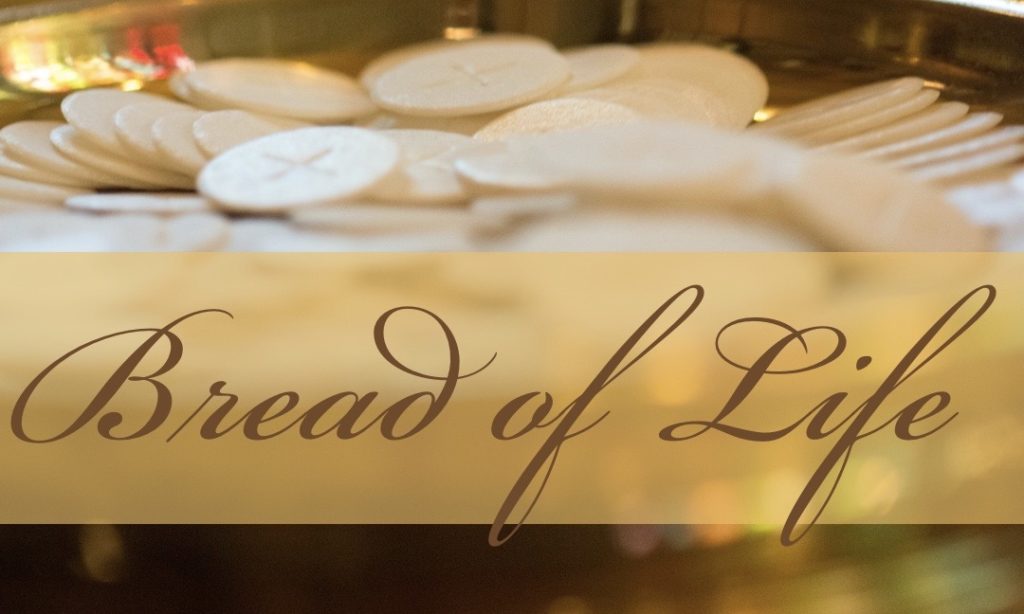
Jesus in the Eucharist:
After experiencing a prolonged Eucharistic fast, it is likely that you are particularly grateful for the opportunity to receive Jesus in the Blessed Sacrament. Perhaps your experience of separation has made your experience of encounter much more meaningful. Or, perhaps what you expected of yourself — what you expected to feel and how you expected to respond — has not transpired as you imagined. You desire to fully receive Jesus, but your heart feels heavy and sluggish. The logistical aspects of how we receive Holy Communion have definitely changed. Perhaps those changes affect you more (and less!) than you think. Here is a brief look:
Bread of Life:
One of the most notable changes that we experience during Mass is that the Eucharist is “only” offered to our parish community under the form of bread. It is important to note that the essential form of consecration, which is central to the Mass, has not and will not change. The basic form of the Eucharistic celebration (first recorded by St. Justin in 155 AD; see Catechism 1345), was instituted by Christ and continues to be offered by His Church — by the first apostles and by our priests today.
One Lord:
It is important to note that Christ is fully present — body, blood, soul, and divinity — under the appearance of either bread or wine in the Eucharist. In fact, Christ is wholly present in the tiniest drop or crumb of Precious Blood or consecrated host. Even if we “only” receive Jesus under the form of bread, we still receive Him in His entirety. Though our reception of the Eucharistic Feast may be partially limited in form, it is never limited in substance; Jesus’s gift of Himself is never limited (Eucarsiticum Mysterium, 32). Even though the logistical aspects of how we receive the Eucharist have changed, the Real Presence of Jesus is the same.
Re-Present:
The Eucharistic consecration does not repeat Jesus’s sacrifice, but it “re-presents” (makes present) His one, perfect sacrifice. The faithful are called to the “re-presentation” of Christ’s life, death, and resurrection — not as spectators, but as participants. We are invited to join Mary at the foot of the cross, united with the offering and intercession of Christ (CCC 1370). From this posture, we not only participate in the in the sacrifice of Christ, but we receive the fruit of His total offering. The Eucharist “applies the fruit” of Christ’s saving work to our lives and hearts (CCC 1366).
Your Presence:
“The Eucharist is also the sacrifice of the Church” (CCC 1368). We are invited to join the Eucharistic feast not just as recipients but as collaborators. “The lives of the faithful, their praise, sufferings, prayer, and work, are united with those of Christ and with his total offering, and so acquire a new value” (CCC 1368). This insight is particularly meaningful in light of our current reality. As we work in new ways, as we suffer, as we strive toward embracing the “new-normal” of everyday life — we can offer all of this to our Lord and unite with His perfect offering. In doing so, our limited striving acquires a new value.



